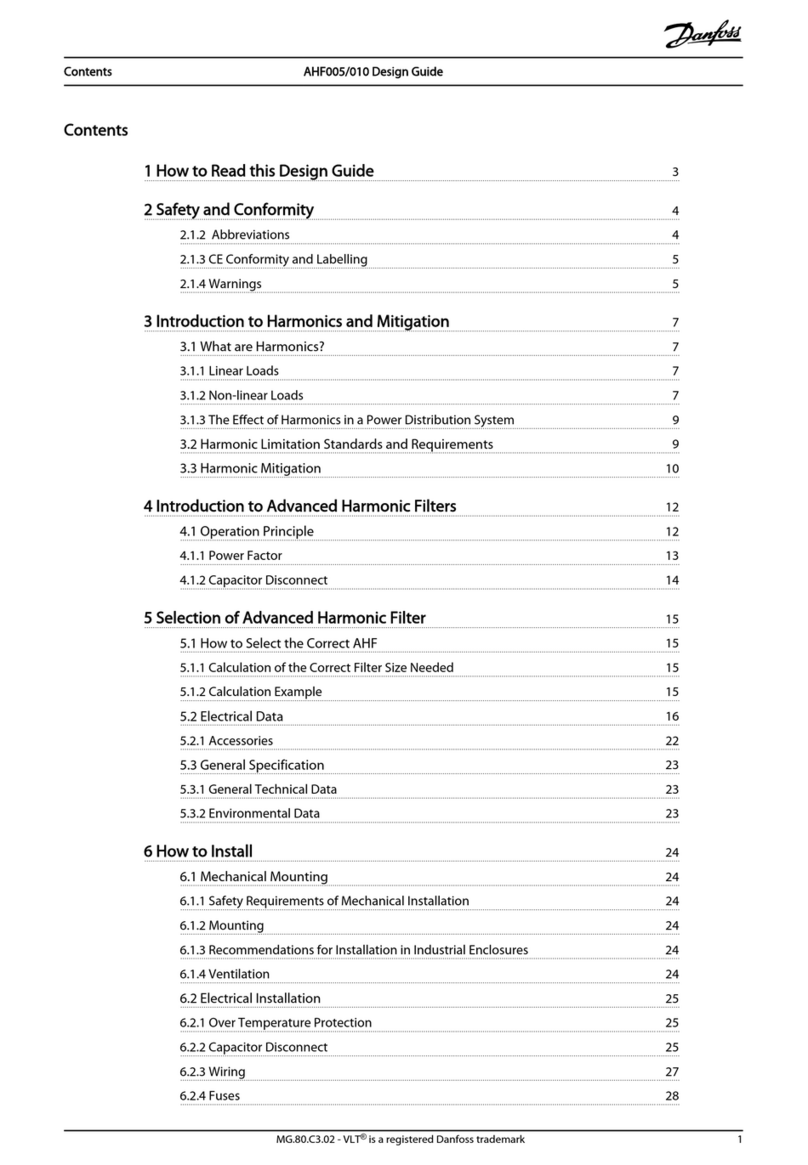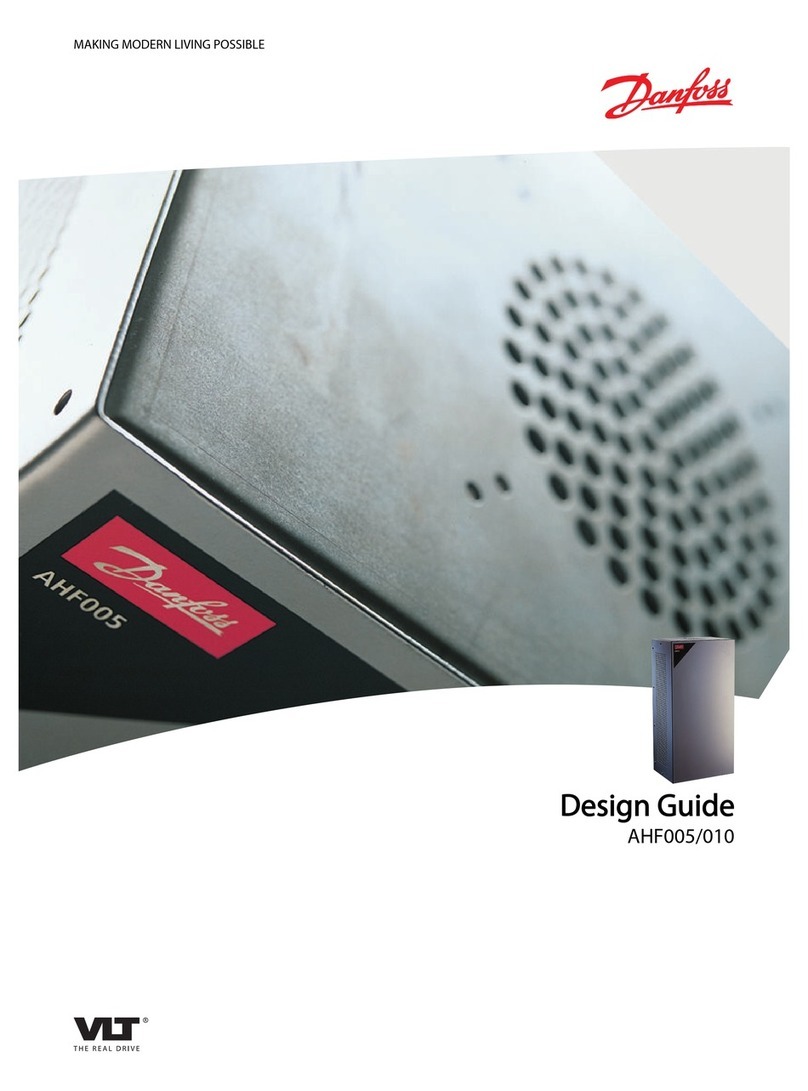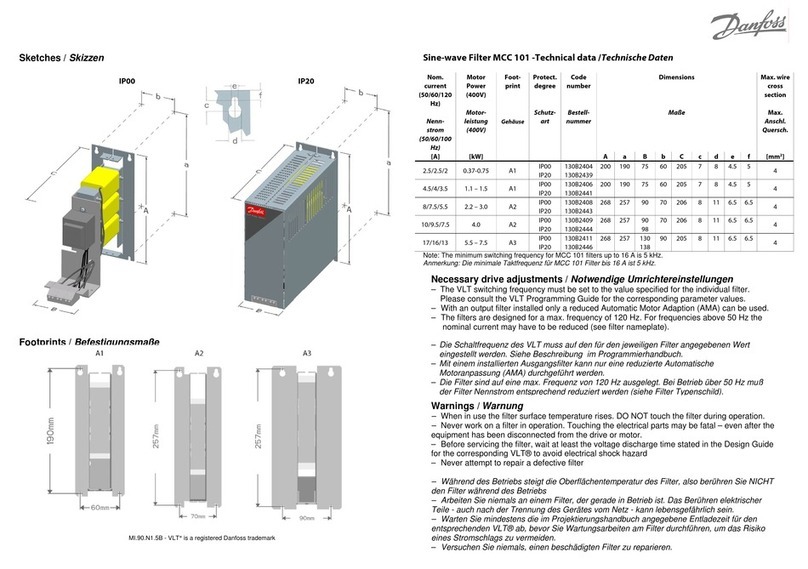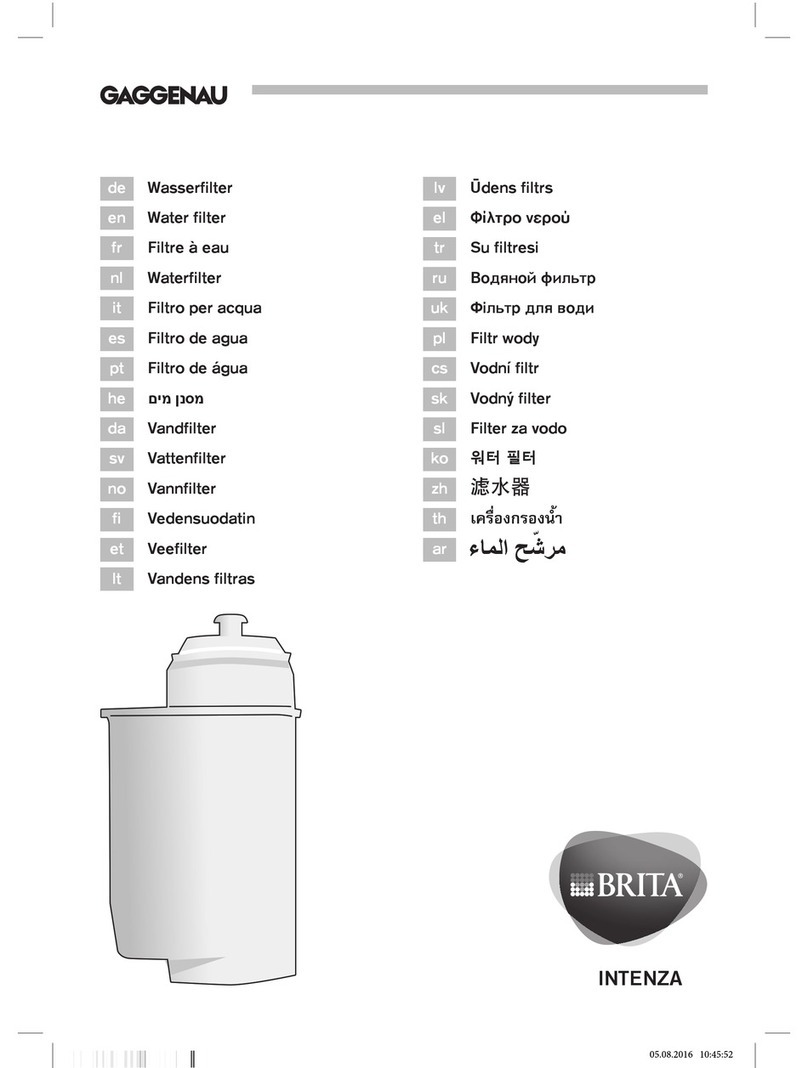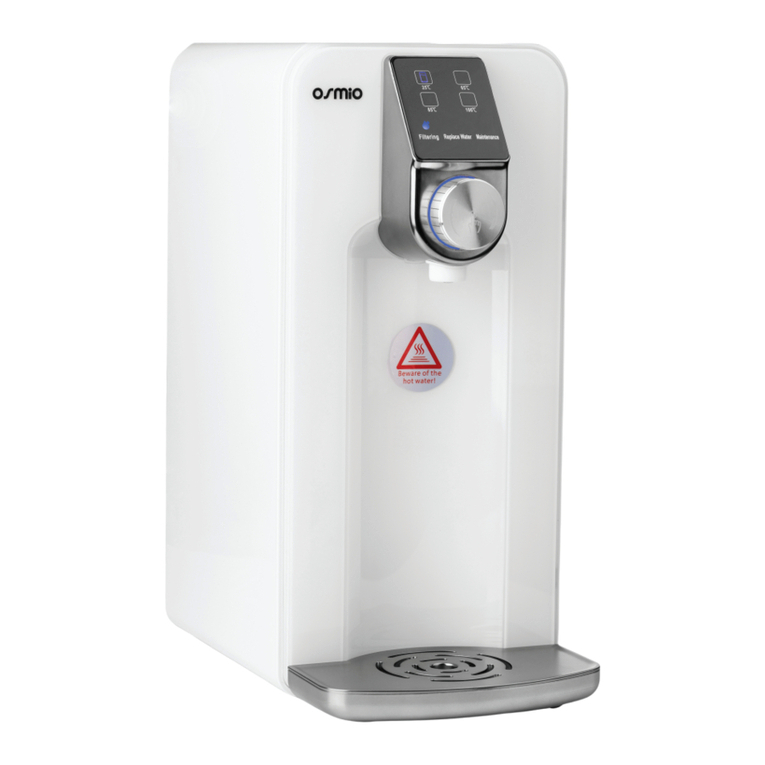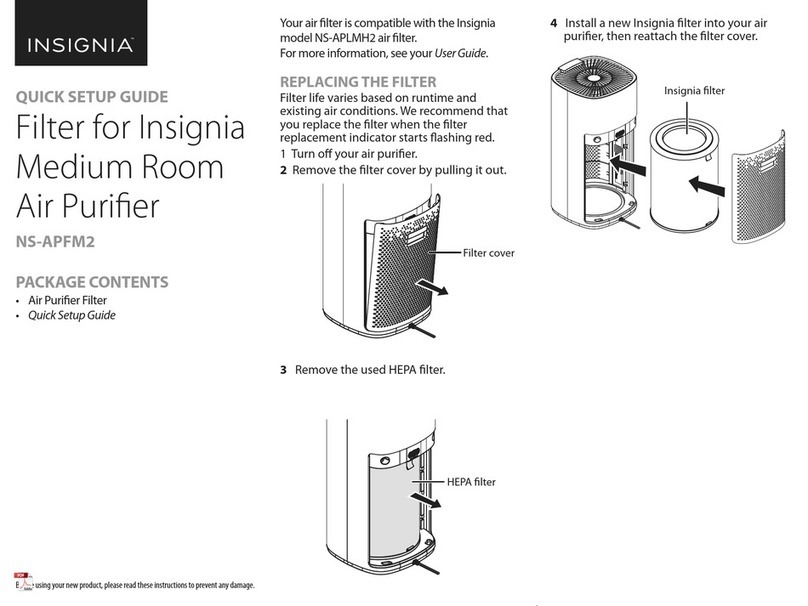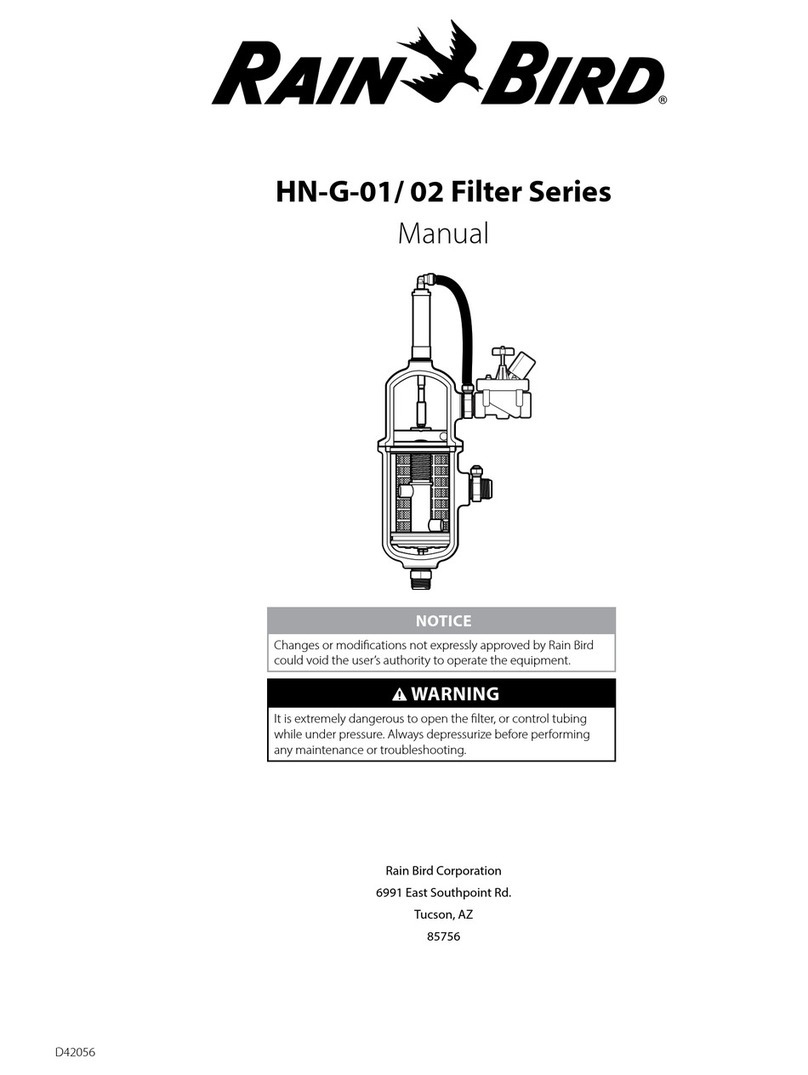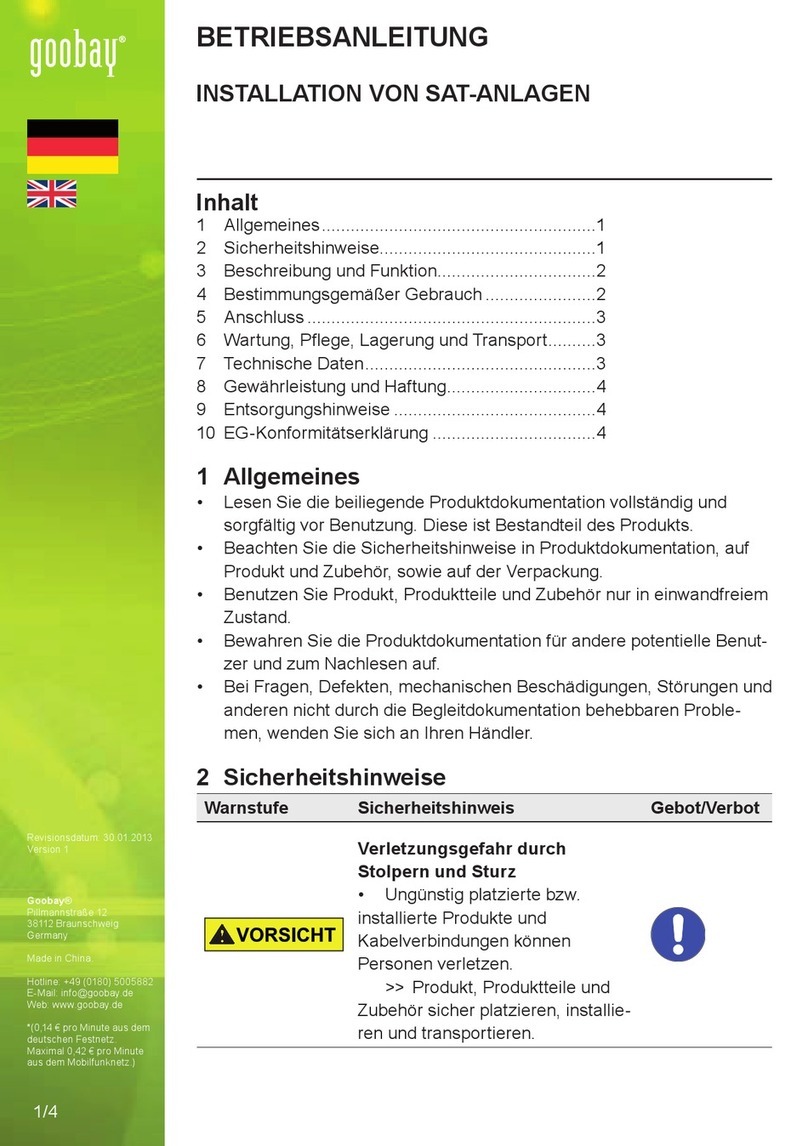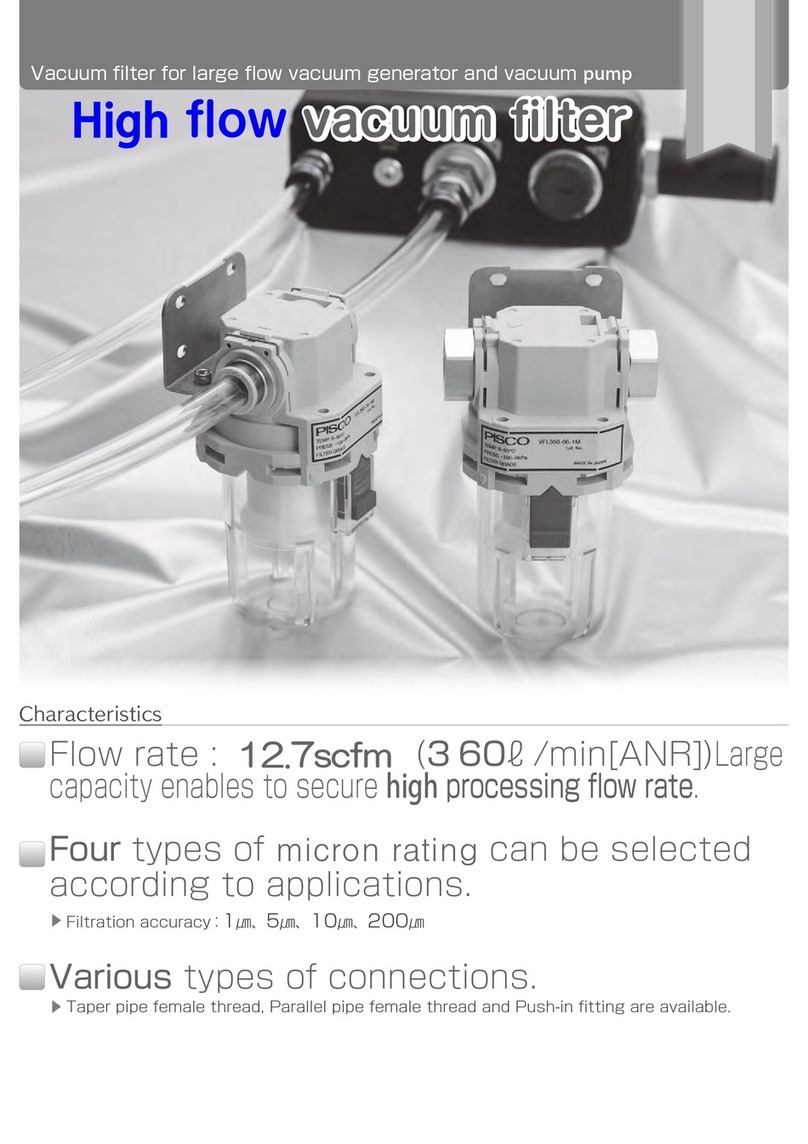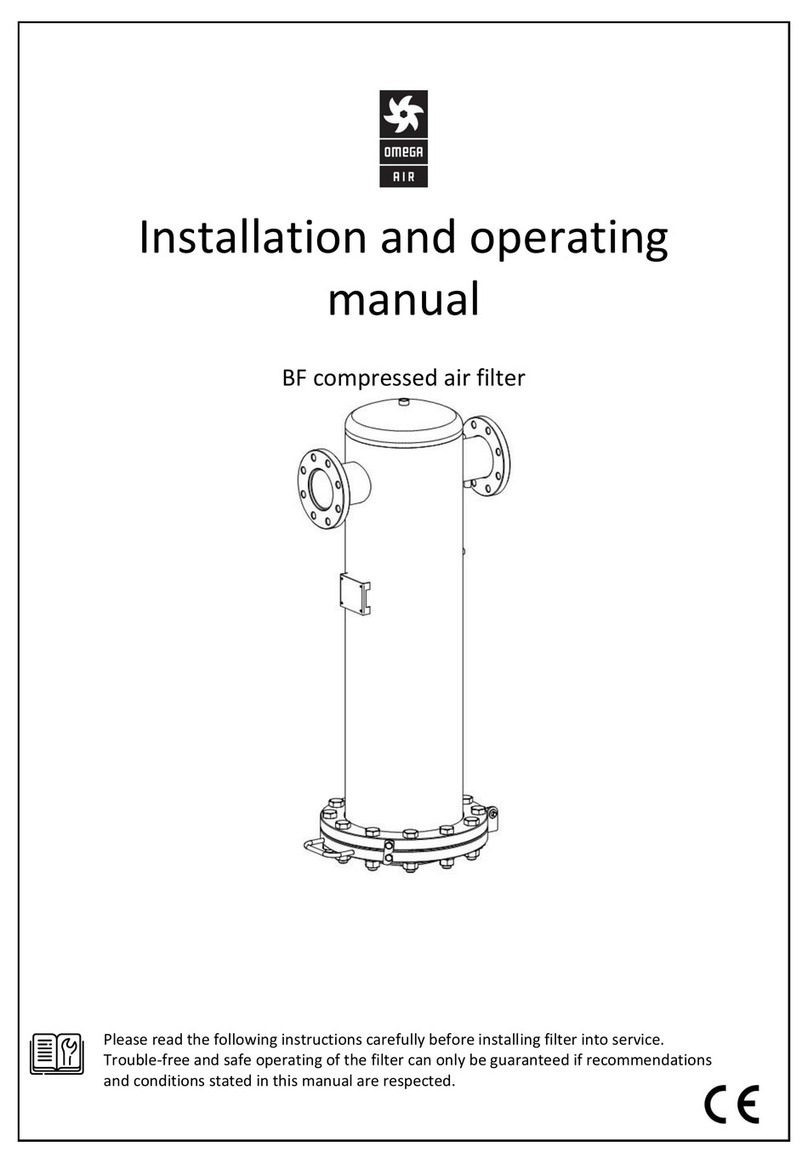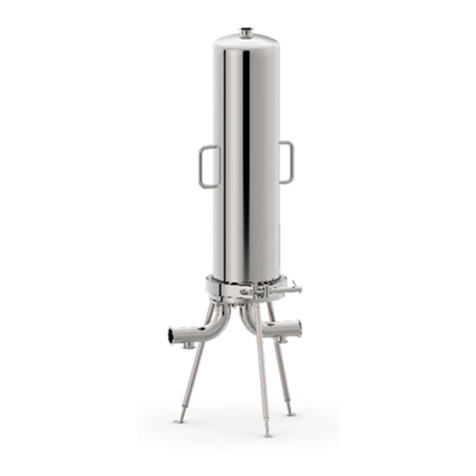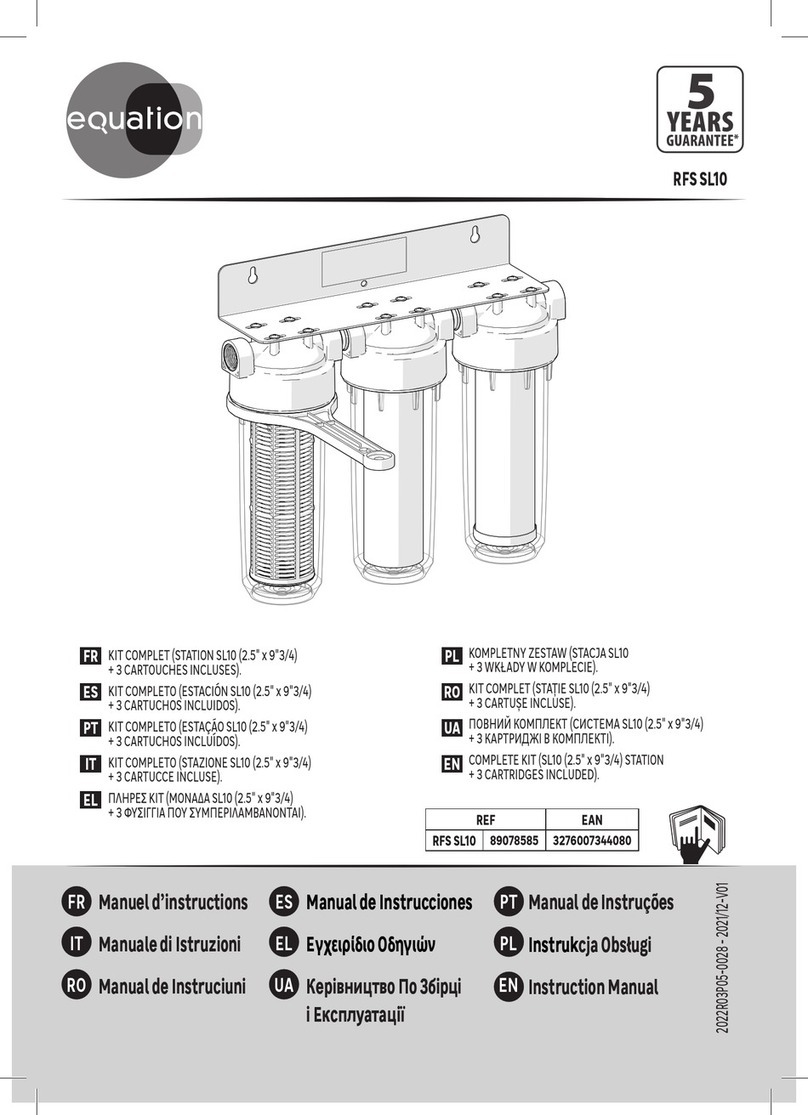Danfoss AHF 010 Guide


Contents
1 Introduction 4
1.1 Purpose of the Design Guide 4
1.2 Document Version 4
1.3 Intended Use 4
1.4 Abbreviations, Symbols, and Conventions 4
1.4.1 Abbreviations 4
1.4.2 Conventions 5
1.5 Approvals and Certications 5
1.5.1 CE Conformity and Labeling 5
1.5.2 CE Mark 5
1.5.2.1 Low Voltage Directive 5
1.5.2.2 EMC Directive 6
1.5.2.3 Machinery Directive 6
1.5.2.4 ErP Directive 6
1.5.3 UL Compliance 6
1.6 Safety 6
1.6.1 General Safety Principles 6
1.6.2 Qualied Personnel 6
2 Introduction to Harmonics and Mitigation 9
2.1 Harmonics and Mitigation 9
2.1.1 Linear Loads 9
2.1.2 Non-linear Loads 9
2.1.3 The Eect of Harmonics in a Power Distribution System 11
2.2 Harmonic Mitigation Standards and Requirements 12
2.2.1 Application-specic Requirements 12
2.2.2 Harmonic Mitigation Standards 12
2.3 Harmonic Mitigation 14
3 Basic Operating Principle of the AHF 15
3.1 Operating Principle 15
3.1.1 Power Factor 16
3.1.2 Capacitive Currents 17
3.2 Energy Eciency 17
4 Requirements for Installation 18
4.1 Mechanical Mounting 18
4.1.1 Safety Requirements of Mechanical Installation 18
4.1.2 Mounting Requirements 20
4.1.3 Recommendations for Installation in Industrial Enclosures 20
Contents Design Guide
MG80C602 Danfoss A/S © 05/2019 All rights reserved. 1

4.1.4 Ventilation and Cooling Requirements 20
4.1.4.1 Requirements for IP20 and IP21/NEMA 1 21
4.2 Electrical Installation 23
4.2.1 Terminals - Short Overview 23
4.2.1.1 Terminals for Capacitor Disconnect 23
4.2.2 Wiring 25
4.2.3 Overtemperature Protection 25
4.2.3.1 Programming of Digital Inputs for Overtemperature Protection 25
5 Selection of Advanced Harmonic Filter 26
5.1 Selecting the Correct AHF 26
5.1.1 How to Calculate the Correct Filter Size 26
5.1.2 Calculation Example 26
5.1.3 Voltage Boost 26
5.2 Selection Tables 27
5.2.1 Capacitor Disconnect Contactors 33
5.2.1.1 Non-Danfoss Contactors 33
5.3 Accessories 34
5.3.1 IP21/NEMA 1 Upgrade Kit 34
5.3.1.1 IP21/NEMA 1 Upgrade Kit without Built-in Capacitor Disconnect Circuitry 35
5.3.1.2 IP21/NEMA 1 Upgrade Kit with Built-in Capacitor Disconnect Circuitry 36
5.3.2 Backplate for IP20 and IP21 38
6 Programming 39
6.1 Parameter Descriptions 39
7 Specications 49
7.1 General Specications 49
7.2 Environmental Data 50
7.3 Power Loss and Acoustic Noise Level 51
7.4 Mechanical Dimensions 54
7.4.1 Terminal Specications 60
7.4.2 IP20 Enclosures 65
7.4.3 IP21 Enclosures 81
7.4.4 Backplate Dimensions 89
7.5 Fuses 91
8 Spare Parts 93
8.1 Selection Tables 94
8.1.1 Capacitor Kits for Revisions 01 and 02 94
8.1.2 Capacitor Kits for Revision 03 97
8.1.3 Terminals 100
Contents VLT®Advanced Harmonic Filter AHF 005/AHF 010
2 Danfoss A/S © 05/2019 All rights reserved. MG80C602

8.1.4 Fan and Fan Accessories for Revisions 01 and 02 103
8.1.5 Fan and Fan Accessories for Revision 03 106
8.1.6 Fuses and Fuse Accessories 114
9 Appendix 116
9.1 Energy Eciency 116
9.1.1 Introduction to Energy Eciency 116
9.1.2 IE and IES Classes 117
9.1.3 Power Loss Data and Eciency Data 117
9.1.4 Losses and Eciency of a Motor 118
9.1.5 Losses and Eciency of a Power Drive System 118
9.1.6 Losses and Eciency of a Power Drive System with Installed Filter 118
9.1.6.1 Calculation Example 119
Index 120
Contents Design Guide
MG80C602 Danfoss A/S © 05/2019 All rights reserved. 3

1 Introduction
1.1 Purpose of the Design Guide
This design guide introduces important aspects of the VLT®
Advanced Harmonic Filters AHF 005/AHF 010 (referred to
as AHF) for VLT®FC Series frequency converters. It
describes harmonics and how to mitigate them, and it
provides installation instructions and guidance on how to
program the frequency converter.
The technical data and information on the connection
conditions are on the nameplate and in the documen-
tation. Always observe the recommendations and
instructions in this document.
Danfoss technical documentation is also available online at
www.danfoss.com.
1.2 Document Version
This manual is regularly reviewed and updated. All
suggestions for improvement are welcome.
Table 1.1 shows the document version.
Edition Remarks
MG80C6xx
Launch of AHF revision 03:
Fan control with variable speed fan.
Optimization of mechanical design.
Lifting eyes in centerlines from X3 enclosure.
Table 1.1 Document Version
1.3 Intended Use
The lters are components designed for installation in
electrical systems or machinery.
When installing in machines, commissioning of the lters
(that is starting of operation as directed) is prohibited until
it is proven that the machine complies with the Machinery
Directive 2006/42/EC. Observe EN 60204.
The VLT®Advanced Harmonic Filter AHF 005/AHF 010 is
intended for use with:
•VLT®HVAC Drive FC 102
•VLT®Refrigeration Drive FC 103
•VLT®AQUA Drive FC 202
•VLT®AutomationDrive FC 301/FC 302
1.4 Abbreviations, Symbols, and
Conventions
1.4.1 Abbreviations
°CDegrees Celsius
°FDegrees Fahrenheit
A Ampere/AMP
AC Alternating current
AHF Advanced Harmonic Filter
AWG American wire gauge
CDM Complete drive module
DC Direct current
DPF Displacement power factor
EMC Electromagnetic compatibility
fM,N Nominal motor frequency
FC Frequency converter
g Ground gravity
HCS Harmonic calculation software
IM,N Nominal motor current
IINV Rated inverter output current
Hz Hertz
kHz Kilohertz
kVAr Kilo-volt-ampere reactive
LCP Local control panel
m Meter
mA Milliampere
MCT Motion control tool
mH Millihenry inductance
min Minute
ms Millisecond
nF Nanofarad
Nm Newton meters
P Active power
PCC Point of common coupling
PDS Power drive system
PELV Protective extra low voltage
PF Power factor
PM,N Nominal motor power
PWHD Partial weighted harmonic
distortion
Q Reactive power
RSCE Short circuit ratio
RPM Revolutions per minute
S Apparent power
s Second
TDD Total demand distortion
THD Total harmonic distortion
THDi Total harmonic current distortion
THDv Total harmonic voltage distortion
Introduction VLT®Advanced Harmonic Filter AHF 005/AHF 010
4 Danfoss A/S © 05/2019 All rights reserved. MG80C602
11

TPF True power factor
UM,N Nominal motor voltage
V Volt
Table 1.2 Abbreviations
1.4.2 Conventions
Numbered lists indicate procedures.
Bullet lists indicate other information and descriptions of
illustrations.
Italicized text indicates:
•Cross-reference
•Link
•Footnote
•Parameter name
•Parameter group name
•Parameter option
All dimensions in drawings are in mm (in).
* Indicates a default setting of a parameter.
1.4.3 Safety Symbols
The following symbols are used in this guide:
WARNING
Indicates a potentially hazardous situation that could
result in death or serious injury.
CAUTION
Indicates a potentially hazardous situation that could
result in minor or moderate injury. It can also be used to
alert against unsafe practices.
NOTICE
Indicates important information, including situations that
can result in damage to equipment or property.
1.5 Approvals and Certications
VLT®Advanced Harmonic Filters AHF 005/AHF 010 are
designed in compliance with the directives described in
this section.
More approvals and certications are available. Contact a
local Danfoss partner.
1.5.1 CE Conformity and Labeling
What is CE conformity and labeling?
The purpose of CE labeling is to avoid technical trade
obstacles within EFTA and the EU. The EU has introduced
the CE label as a simple way of showing whether a
product complies with the relevant EU directives and
standards. The CE label says nothing about the speci-
cations or quality of the product.
1.5.2 CE Mark
Illustration 1.1 CE
The CE mark (Communauté Européenne) indicates that the
product manufacturer conforms to all applicable EU
directives. The EU directives applicable to the design and
manufacture of frequency converters are listed in Table 1.3.
NOTICE
The CE mark does not regulate the quality of the
product. Technical specications cannot be deduced from
the CE mark.
EU Directive Version
Low Voltage Directive 2014/35/EU
EMC Directive 2014/30/EU
Machinery Directive1) 2006/42/EC
ErP Directive 2009/125/EC
ATEX Directive 2014/34/EU
RoHS Directive 2011/65/EU
Table 1.3 EU Directives Applicable to Frequency Converters
1) Machinery Directive conformance is only required for frequency
converters with an integrated safety function.
Declarations of conformity are available on request.
1.5.2.1 Low Voltage Directive
Drives must be CE-labeled in accordance with the Low
Voltage Directive of April 20, 2016. The Low Voltage
Directive applies to all electrical equipment in the 50–
1000 V AC and the 75–1500 V DC voltage ranges.
The aim of the directive is to ensure personal safety and
avoid property damage when operating electrical
equipment that is installed, maintained, and used as
intended.
Introduction Design Guide
MG80C602 Danfoss A/S © 05/2019 All rights reserved. 5
11

1.5.2.2 EMC Directive
The purpose of the EMC (electromagnetic compatibility)
Directive is to reduce electromagnetic interference and
enhance immunity of electrical equipment and instal-
lations. The basic protection requirement of the EMC
Directive is that devices that generate electromagnetic
interference (EMI), or whose operation could be aected
by EMI, must be designed to limit the generation of
electromagnetic interference. The devices must have a
suitable degree of immunity to EMI when properly
installed, maintained, and used as intended.
Electrical equipment devices used alone or as part of a
system must bear the CE mark. Systems do not require the
CE mark, but must comply with the basic protection
requirements of the EMC Directive.
1.5.2.3 Machinery Directive
The aim of the Machinery Directive is to ensure personal
safety and avoid property damage to mechanical
equipment used in its intended application. The Machinery
Directive applies to a machine consisting of an aggregate
of interconnected components or devices of which at least
1 is capable of mechanical movement.
Drives with an integrated safety function must comply with
the Machinery Directive. Drives without a safety function
do not fall under the Machinery Directive. If a drive is
integrated into a machinery system, Danfoss can provide
information on safety aspects relating to the drive.
When drives are used in machines with at least 1 moving
part, the machine manufacturer must provide a declaration
stating compliance with all relevant statutes and safety
measures.
1.5.2.4 ErP Directive
The ErP directive is the European Ecodesign Directive for
energy-related products. The directive sets ecodesign
requirements for energy-related products, including
frequency converters. The directive aims at increasing
energy eciency and the level of protection of the
environment, while increasing the security of the energy
supply. Environmental impact of energy-related products
includes energy consumption throughout the entire
product life cycle.
The RCM Mark label indicates compliance with the
applicable technical standards for electromagnetic compat-
ibility (EMC). An RCM Mark label is required for placing
electrical and electronic devices on the market in Australia
and New Zealand. The RCM Mark regulatory arrangements
only deal with conducted and radiated emission. For
frequency converters, the emission limits specied in
EN/IEC 61800-3 apply. A declaration of conformity can be
provided on request.
1.5.3 UL Compliance
Illustration 1.2 UL
NOTICE
The VLT®Advanced Harmonic Filter AHF 005/AHF 010
460 V/60 Hz and 600 V/60 Hz types are UL-listed at UL
le no. E134261 (NMMS.E134261).
1.6 Safety
1.6.1 General Safety Principles
If handled improperly, drives have the potential for fatal
injury as they contain high voltage components. Only
qualied personnel are allowed to install and operate the
equipment. Do not attempt repair work without rst
removing power from the drive and waiting the
designated amount of time for stored electrical energy to
dissipate.
Strict adherence to safety precautions and notices is
mandatory for safe operation of the drive and lter.
1.6.2 Qualied Personnel
Correct and reliable transport, storage, installation,
operation, and maintenance are required for the trouble-
free and safe operation of the lter. Only qualied
personnel are allowed to install or operate this equipment.
Qualied personnel are dened as trained sta, who are
authorized to install, commission, and maintain equipment,
systems, and circuits in accordance with pertinent laws and
regulations. Also, the qualied personnel must be familiar
with the instructions and safety measures described in this
manual.
WARNING
IMPROPER INSTALLATION
Improper installation of the lter or the frequency
converter may cause death, serious injury, or equipment
failure.
•Follow this design guide and install according
to National and Local Electrical Codes.
Introduction VLT®Advanced Harmonic Filter AHF 005/AHF 010
6 Danfoss A/S © 05/2019 All rights reserved. MG80C602
11

WARNING
HIGH VOLTAGE
Filters contain high voltage when connected to AC mains
input. Failure to perform installation, start-up, and
maintenance by qualied personnel can result in death
or serious injury.
•Only qualied personnel must perform instal-
lation, start-up, and maintenance.
•Never work on a lter in operation.
WARNING
DISCHARGE TIME
The VLT®Advanced Harmonic Filters AHF 005/AHF 010
contain capacitors. The capacitors can remain charged
even when the lter is not powered. Failure to wait the
specied time after power has been removed before
performing service or repair work can result in death or
serious injury.
1. Stop the frequency converter and the motor.
2. Disconnect AC mains, permanent magnet type
motors, remote DC-link supplies including
battery back-ups, UPS, and DC-link connections
to other frequency converters.
3. Wait the required time specied on the
nameplate, ensuring that the capacitors are
discharged fully, before performing any service
or repair work on the lter.
4. Before performing any service or repair work on
the lter, ensure that the voltage is 0 between
the lter terminals X3.1, X3.2, and X3.3, and
between the lter terminals X4.1, X4.2, and
X4.3.
CAUTION
ELECTRICAL HAZARD
When measuring on live lters, observe the valid
national regulations for the prevention of accidents (for
example VBG 4).
The electrical installation must be carried out according
to the appropriate regulations (for example cable cross-
sections, fuses, and PE connection). When using the
lters with frequency converters without safe separation
from the supply line (to VDE 0100), include all control
wiring in further protective measures (for example
double insulated or shielded, grounded, and insulated).
CAUTION
HOT SURFACE
When in use, the lter surface becomes hot.
•Do NOT touch the lter during operation.
CAUTION
OVERTEMPERATURE
Overtemperature damages the lter chokes. To prevent
overtemperature:
•Use temperature switches, see
chapter 4.2.3 Overtemperature Protection.
•Perform an immediate stop or a controlled
ramp down within 30 s.
CAUTION
PROTECTIVE DEVICES
Equip systems where lters are installed with extra
monitoring and protective devices according to the valid
safety regulations, for example rules on technical tools
and regulations for the prevention of accidents.
CAUTION
Non-authorized removal of required cover, inappropriate
use, incorrect installation, or operation create the risk of
severe injury to persons or damage to material assets.
•To avoid the risk, only let authorized and
qualied personnel handle the VLT®Advanced
Harmonic Filter AHF 005/AHF 010.
NOTICE
The lters shown in this design guide are specially
designed and tested for operation with Danfoss
frequency converters, see chapter 1.3.1 Intended Use.
Danfoss takes no responsibility for the use of the lters
with third-party frequency converters.
NOTICE
REPAIR OF FILTER
Only Danfoss authorized, qualied personnel are allowed
to repair the VLT®Advanced Harmonic Filter AHF
005/AHF 010. See chapter 8 Spare Parts for more details.
NOTICE
Commissioning is only allowed when there is compliance
with the EMC Directive 2014/30/EU.
The lters meet the requirements of the Low Voltage
Directive 2014/35/EU.
Introduction Design Guide
MG80C602 Danfoss A/S © 05/2019 All rights reserved. 7
11

NOTICE
Protect the lter from inappropriate loads, particularly
during transport and handling. Components are not
allowed to be bent. Do not alter the distance in between
isolation. Avoid touching electronic components and
contacts.
Introduction VLT®Advanced Harmonic Filter AHF 005/AHF 010
8 Danfoss A/S © 05/2019 All rights reserved. MG80C602
11

2 Introduction to Harmonics and Mitigation
2.1 Harmonics and Mitigation
2.1.1 Linear Loads
On a sinusoidal AC supply, a purely resistive load (for
example an incandescent light bulb) draws a sinusoidal
current in phase with the supply voltage.
The power dissipated by the load is:
P=U×I
For reactive loads (such as an induction motor), the current
is no longer in phase with the voltage. Instead, the current
lags the voltage creating a lagging power factor with a
value less than 1. In the case of capacitive loads, the
current is ahead of the voltage, creating a leading power
factor with a value less than 1.
Illustration 2.1 Current Creating a True Power Factor
In this case, the AC power has 3 components:
•Real power, (P).
•Reactive power, (Q).
•Apparent power, (S).
The apparent power is:
S=U×I
(where S=[kVA], P=[kW] and Q=[kVAR]).
In the case of a perfectly sinusoidal waveform, P, Q, and S
can be expressed as vectors that form a triangle:
S2=P2+Q2
P
S
Q
φ
130BB538.10
Illustration 2.2 Sinusoidal Waveform
The displacement angle between current and voltage is φ.
The displacement power factor is the ratio between the
active power (P) and apparent power (S):
DPF =P
S=cos(ϕ)
2.1.2 Non-linear Loads
Non-linear loads (such as diode rectiers) draw a non-
sinusoidal current. Illustration 2.3 shows the current drawn
by a 6-pulse rectier on a 3-phase supply.
A non-sinusoidal waveform can be decomposed in a sum
of sinusoidal waveforms with periods equal to integer
multiples of the fundamental waveform.
f(t) = ∑ah×sin hω1t
See Illustration 2.3.
Introduction to Harmonics a... Design Guide
MG80C602 Danfoss A/S © 05/2019 All rights reserved. 9
22

1
1 2 3 4 5 6 7
0.
0
0
-
-
1
1 2 3 4 5 6 7
0.
0
0
-
-
130BB539.10
Illustration 2.3 Sinusoidal Waveforms
Introduction to Harmonics a... VLT®Advanced Harmonic Filter AHF 005/AHF 010
10 Danfoss A/S © 05/2019 All rights reserved. MG80C602
22

The integer multiples of the fundamental frequency ω1 are
called harmonics. The RMS value of a non-sinusoidal
waveform (current or voltage) is expressed as:
IRMS =∑
h= 1
hmax
I(h)
2
The number of harmonics in a waveform gives the
distortion factor, or total harmonic distortion (THD). The
THD is given by the ratio of RMS of the harmonic content
to the RMS value of the fundamental quantity, expressed
as a percentage of the fundamental:
THD =∑
h= 2
hmax Ih
I1
2
× 100 %
Using the THD, the relationship between the RMS current
IRMS and the fundamental current I1can be expressed as:
IRMS =I1×1+THD2
The same applies for voltage.
The true power factor PF (λ) is:
PF =P
S
In a linear system, the true power factor is equal to the
displacement power factor:
PF =DPF =cos ϕ
In non-linear systems, the relationship between power
factor and displacement power factor is:
PF =DPF
1 + THD2
Reactive power decreases the power factor and harmonic
loads. A low-power factor results in a high RMS current
that produces higher losses in the supply cables and
transformers.
In the power quality context, the total demand distortion
(TDD) term is often encountered. The TDD does not
characterize the load, but it is a system parameter. TDD
expresses the current harmonic distortion in percentage of
the maximum demand current IL.
TDD =∑
h= 2
hmax Ih
IL
2
× 100 %
Another term often encountered is the partial weighted
harmonic distortion (PWHD). PWHD is a weighted
harmonic distortion that contains only the harmonics
between the 14th and the 40th, as shown in the following
denition.
PWHD =∑
h= 14
40 Ih
I1
2
× 100 %
2.1.3 The Eect of Harmonics in a Power
Distribution System
In Illustration 2.4, a transformer is connected on the
primary side to a point of common coupling, PCC1, on the
medium voltage supply. The transformer has an impedance
Zxfr and feeds several loads. PPC 2 is the point of common
coupling where all loads are connected. Each load is
connected through cables that have an impedance Z1, Z2,
Z3.
Illustration 2.4 Small Distribution System
Harmonic currents drawn by non-linear loads cause
distortion of the voltage because of the voltage drop on
the impedances of the distribution system. Higher
impedances result in higher levels of voltage distortion.
Current distortion relates to apparatus performance, and it
relates to the individual load. Voltage distortion relates to
system performance. It is not possible to determine the
voltage distortion in the PCC knowing only the harmonic
performance of the load. To predict the distortion in the
PCC, the conguration of the distribution system and
relevant impedances must be known.
A commonly used term for describing the impedance of a
grid is the short circuit ratio Rsce. This ratio is dened as
the ratio between the short circuit apparent power of the
supply at the PCC (Ssc) and the rated apparent power of
the load (Sequ).
Rsce =Sce
Sequ
where Ssc =U2
Zsupply
and Sequ =U×Iequ
Introduction to Harmonics a... Design Guide
MG80C602 Danfoss A/S © 05/2019 All rights reserved. 11
22

The negative eect of harmonics is twofold
•Harmonic currents contribute to system losses (in
cabling and transformer).
•Harmonic voltage distortion causes disturbance
to and increases losses in other loads.
Non-linear
Current Voltage
System
Impedance
Disturbance to
other users
Contribution to
system losses
130BB541.10
Illustration 2.5 The Negative Eect of Harmonics
2.2 Harmonic Mitigation Standards and
Requirements
The requirements for harmonic limitation can be:
•Application-specic requirements.
•Requirements from standards that have to be
observed.
2.2.1 Application-specic Requirements
The application-specic requirements are related to a
specic installation where there are technical reasons for
limiting the harmonics.
Example
Two 110 kW motors are connected to a 250 kVA
transformer. One motor is connected direct online, and the
other is supplied through a frequency converter. If the
direct online motor should also be supplied through a
frequency converter, the transformer is, in this case,
undersized. To retrot without changing the transformer,
mitigate the harmonic distortion from the 2 frequency
converters by using VLT®Advanced Harmonic Filters
AHF 005/AHF 010.
2.2.2 Harmonic Mitigation Standards
There are various harmonic mitigation standards,
regulations, and recommendations. Dierent standards
apply in dierent geographical areas and industries. The
following encountered standards are presented:
•IEC/EN 61000-3-2
•IEC/EN 61000-3-12
•IEC/EN 61000-3-4
•IEC 61000-2-2
•IEC 61000-2-4
•IEEE 519
•G5/4
Introduction to Harmonics a... VLT®Advanced Harmonic Filter AHF 005/AHF 010
12 Danfoss A/S © 05/2019 All rights reserved. MG80C602
22

Number of
standard
Title Scope Comments
IEC
61000-3-2
Limits for harmonic current
emissions (equipment
input current ≤16 A per
phase).
Equipment connected to the
public low-voltage distri-
bution system having an
input current up to and
including 16 A per phase.
Danfoss frequency converters are in Class A.
There are no limits for professional equipment with a total
rated power >1 kW.
IEC
61000-3-12
Limits for harmonic
currents produced by
equipment connected to
public low-voltage systems
with input current >16 A
and ≤75 A.
Equipment connected to the
public low-voltage distri-
bution system having an
input current >16 A and
≤75 A.
The emission limits are currently only for 230/400 V 50 Hz
systems.
There are requirements for individual harmonics (5th, 7th, 11th,
and 13th) and for THD1) and PWHD2).
All frequency converters listed in chapter 1.3 Intended Use
comply with these limits without extra ltering.
IEC
61000-3-4
Limits, limitation of
emission of harmonic
currents in low-voltage
supply systems for
equipment with rated
current >16 A.
Equipment with rated current
>75 A connected to the
public low-voltage distri-
bution system.
A 3-stage assessment procedure is described for the connection
of equipment to the public supply. Equipment >75 A is limited
to stage 3 Connection based on the load's agreed power.
The supply authority may accept the connection of the
equipment based on the agreed active power of the load's
installation and local requirements of the supply authority
apply.
The manufacturer shall provide individual harmonics and the
values for THD and PWHD.
IEC
61000-2-2/
IEC
61000-2-4
Compatibility levels for
low-frequency conducted
disturbances.
Stipulation of compatibility
levels for low-frequency
conducted disturbances in
public low-voltage supply
systems (IEC 61000-2-2) and
industrial plants (IEC
61000-2-4).
Low-frequency disturbances include but are not limited to
harmonics.
Consider the values prescribed in the standards when planning
installations.
IEEE 519 IEEE-recommended
practices and requirements
for harmonic control in
electrical power systems.
Control of the voltage
distortion at the PCC to a
TDD of 5% and limitation of
the maximum individual
frequency voltage harmonic
to 3%.
Establishment of goals for the design of electrical systems that
include both linear and non-linear loads. Waveform distortion
goals are established, and the interface between sources and
loads is described as point of common coupling (PCC).
The current distortion limits depend on the ratio ISC/ILwhere ISC
is the short circuit current at the utility PCC and ILis the
maximum demand load current. The limits are given for
individual harmonics up to the 35th and total demand
distortion (TDD).
The most eective way to meet the harmonic distortion
requirements is to mitigate at the individual loads and measure
at the PCC.
G5/4 Engineering recommen-
dation, planning levels for
harmonic voltage
distortion, and the
connection of non-linear
equipment to transmission
systems and distribution
networks in the United
Kingdom.
Setting planning levels for
harmonic voltage distortion
to be used in the process of
connecting non-linear
equipment. A process for
establishing individual
customer emission limits
based on these planning
levels is described.
G5/4 is a system level standard.
For 400 V, the voltage THD planning level is 5% at the PCC.
Limits for odd and even harmonics in 400 V systems are given
in Table 2 in the standard.
The standard describes a 3-stage assessment procedure for the
connection of non-linear equipment. The procedure aims at
balancing the level of detail required by the assessment process
with the degree of risk that the connection of particular
equipment results in unacceptable voltage harmonic distortion.
Compliance of a system containing VLT®frequency converters
depends on the specic topology and population of non-linear
loads. To meet the requirements of G5/4, employ VLT®
Advanced Harmonic Filters AHF 005/AHF 010.
Table 2.1 Harmonics Mitigation Standards
Introduction to Harmonics a... Design Guide
MG80C602 Danfoss A/S © 05/2019 All rights reserved. 13
22

1) New denitions are introduced through IEC/EN 61000-3-12:2011
which means that. THD is replaced by THC/Iref.
2) New denitions are introduced through IEC/EN 61000-3-12:2011
which means that PWHD is replaced by PWHC/Iref
2.3 Harmonic Mitigation
There are several ways of mitigating the harmonics caused
by the frequency converter 6-pulse rectier, and they all
have their advantages and disadvantages.
Selecting the right solution depends on several factors:
•The grid (background distortion, mains
unbalance, resonance, and type of supply -
transformer/generator).
•Application (load prole, number of loads, and
load size).
•Local/national requirements/regulations (for
example IEEE 519, IEC, and ER G5/4).
•Total cost of ownership (for example initial cost,
eciency, and maintenance).
IEC standards are harmonized by various countries or
supra-national organizations. All above-mentioned IEC
standards are harmonized in the European Union with the
prex “EN”. For example, the European EN 61000-3-2 is the
same as IEC 61000-3-2. The situation is similar in Australia
and New Zealand, with the prexes AS/NZS.
Categories of harmonic solutions:
•Passive
•Active
Passive solutions consist of capacitors, inductors, or a
combination of the 2 in dierent arrangements.
The simplest solution is to add inductors/reactors of
typically 3–5% in front of the frequency converter. This
added inductance reduces the number of harmonic
currents produced by the frequency converter. More
advanced passive solutions combine capacitors and
inductors in trap arrangement specially tuned to eliminate
harmonics starting from, for example, the 5th harmonic.
The active solutions determine the exact current that
cancels the harmonics present in the circuit and
synthesizes and injects that current into the system. Thus,
the active solution mitigates the real-time harmonic distur-
bances, which makes these solutions eective at any load
prole. For more details on the Danfoss active solutions,
refer to VLT
®
Low Harmonic Drive Operating Instructions and
VLT
®
Advanced Active Filter AAF 006 Operating Instructions.
Introduction to Harmonics a... VLT®Advanced Harmonic Filter AHF 005/AHF 010
14 Danfoss A/S © 05/2019 All rights reserved. MG80C602
22

3 Basic Operating Principle of the AHF
3.1 Operating Principle
The VLT®Advanced Harmonic Filter AHF 005/AHF 010
consists of a main inductor L0and a 2-stage absorption
circuit with the inductors L1and L2, and the capacitors C1
and C2. The absorption circuit is specially tuned to
eliminate harmonics starting with the 5th harmonic and is
specic for the designed supply frequency. Therefore, the
circuit for 50 Hz has dierent parameters than the circuit
for 60 Hz.
L0
L1
L2C2
C1
M
AHF
Supply Motor
130BB578.11
Frequency
converter
Illustration 3.1 Operating Principle
AHFs are available in 2 variants for 2 performance levels:
•AHF 005 with 5% THDi.
•AHF 010 with 10% THDi.
Each of the 2 variants is available with the following
voltages:
•380–415 V, 50 Hz.
•380–415 V, 60 Hz.
•440–480 V, 60 Hz.
•600 V, 60 Hz.
•500–690 V, 50 Hz.
The AHF 010 oers a performance similar to 12-pulse
rectiers, and the AHF 005 oers a performance similar to
18-pulse rectiers.
The lter performance in terms of THDi varies as a function
of the load. At nominal load, the lter performance is
better than 10% THDi for AHF 010 and 5% THDi for AHF
005.
At part load, the THDi has higher values. However, the
absolute value of the harmonic current is lower at part
loads, even if the THDi has a higher value. Therefore, the
negative eect of the harmonics at part loads is lower than
at full load.
Example of part load
An 18.5 kW (25 hp) frequency converter is installed on a
400 V/50 Hz grid with a 34 A AHF 010 (type code AHF-
DA-34-400-50-20-A).
The values in Table 3.1 are measured for dierent load
currents, using a harmonic analyzer:
Iline RMS Basic current
at 50 Hz I1)
RMS
THDi Total
harmonic
current IhRMS
[A] [A] [%] [A]1)
9.6 9.59 5.45 0.52
15.24 15.09 13.78 2.07
20.24 20.08 12.46 2.5
25.17 25 11.56 2.89
30.27 30.1 10.5 3.15
34.2 34.03 9.95 3.39
Table 3.1 Example of Load Currents
1) The total harmonic current has been calculated. The THDi versus
load plot is shown in Illustration 3.2.
AHF-DA-34-400-50-20-A
0
2
4
6
8
10
12
14
16
10 15 20 25 30 35
Iline [A]
THDi [%]
0
0.5
1
1.5
2
2.5
3
3.5
4
Harmonic current I
h
[A]
THDi [%]
Harmonic current Ih[A]
130BB579.11
Illustration 3.2 THDi versus Load
At part load, 15 A, the THDi is approximately 14%
compared to 10% at the nominal load of 34 A. At the
same time, the total harmonic current is only 2.07 A at
15 A line current against 3.39 A harmonic current at 34 A
line current. Thus, THDi is only a relative indicator of the
harmonic performance. The harmonic distortion of the
voltage is less at part load than at nominal load.
Background distortion
Factors such as background distortion and grid unbalance
can aect the performance of AHF lters. The specic
gures are dierent from lter to lter, and Illustration 3.3
to Illustration 3.6 show typical performance characteristics.
For specic details, use a harmonic design tool such as
MCT 31 or Harmonic Calculation Software (HCS).
The design of the lters aims to achieve 10%, respectively,
5% THDi levels with a background distortion of THDv =
2%. Practical measurements on typical grid conditions in
Basic Operating Principle o... Design Guide
MG80C602 Danfoss A/S © 05/2019 All rights reserved. 15
33

frequency converter installations often show that the
performance of the lter is slightly better with a 2%
background distortion. However, the complexity of the grid
conditions and the mix of specic harmonics does not
provide a general rule about the performance on a
distorted grid. Illustration 3.3 and Illustration 3.4 show
worst-case performance deterioration characteristics with
the background distortion.
0 20 40 60 80 100
0
5
10
15
20
25 THvD 0%
THvD 2%
THvD 5%
Load [%]
THiD average [%]
130BB580.10
Illustration 3.3 AHF 005
0
10
20
30
40
50
60
0 20 40 60 80 100
Load [%]
THvD 0%
THvD 2%
THvD 5%
THiD [%]
130BB581.10
Illustration 3.4 AHF 010
Performance at 10% THDv has not been plotted. However,
the lters have been tested and can operate at 10% THDv,
but the lter performance can no longer be guaranteed.
The lter performance also deteriorates with the unbalance
of the supply. Typical performance is shown in
Illustration 3.5 and Illustration 3.6.
0% unbalance
1% unbalance
2% unbalance
3% unbalance
0 20 40 60 80 100
Load [%]
0
2
4
6
8
10
12
14
THiD [%]
130BB582.10
Illustration 3.5 AHF 005
130BB583.10
0
0 20 40 60 80 100
Load [%]
5
10
15
20
25 0%unbalance
1%unbalance
2%unbalance
3%unbalance
THiD average [%]
Illustration 3.6 AHF 010
3.1.1 Power Factor
In no-load conditions (the frequency converter is in stand-
by), the frequency converter current is negligible, and the
main current drawn from the grid is the current through
the capacitors in the harmonic lter. Therefore, the power
factor is close to 0, capacitive. The capacitive current is
approximately 25% of the lter nominal current (depends
on lter size, typical values of 20–25%). The power factor
increases with the load. Because of the higher value of the
main inductor L0in the VLT®Advanced Harmonic Filter
AHF 005, the power factor is slightly higher than in the
VLT®Advanced Harmonic Filter AHF 010.
Illustration 3.7 and Illustration 3.8 show typical values for
the true power factor on AHF 010 and AHF 005.
0
0,1
0,2
0,3
0,4
0,5
0,6
0,7
0,8
0,9
1
0 20 40 60 80 100
Load [%]
True Power Factor
130BB584.10
Illustration 3.7 AHF 005
0,1
0,2
0,3
0,4
0,5
0,6
0,7
0,8
0,9
1
0 20 40 60 80 100
Load [%]
0
True Power Factor
130BB585.10
Illustration 3.8 AHF 010
Basic Operating Principle o... VLT®Advanced Harmonic Filter AHF 005/AHF 010
16 Danfoss A/S © 05/2019 All rights reserved. MG80C602
33

3.1.2 Capacitive Currents
If the specic application requires a higher power factor at
no-load and a reduction of the capacitive current in
standby, use a capacitor disconnect. A contactor
disconnects the capacitor at loads below 20%.
NOTICE
It is important to note that the capacitors must not be
connected at full load or disconnected at no load.
It is important to consider the capacitive current in the
design of applications where the harmonic lter is supplied
by a generator. The capacitive current can cause
overvoltage of the generator in no-load and low-load
conditions. The overvoltage causes an increase of the
voltage, which then may exceed the allowed voltage for
the lter and the frequency converter. Therefore, always
use a capacitor disconnect in generator applications and
consider the design carefully. For more information about
capacitive currents, refer to chapter 4.2.1.1 Terminals for
Capacitor Disconnect.
Compared to multi-pulse rectiers, passive harmonic lters
(such as VLT®Advanced Harmonic Filter AHF 005/AHF 010)
are more robust against background distortion and supply
imbalance. However, the performance of passive lters is
inferior to the performance of active lters when it comes
to part load performance and power factor. For details
about the performance positioning of the various
harmonic mitigation solutions oered by Danfoss, consult
the relevant harmonic mitigation manuals.
3.2 Energy Eciency
For energy eciency calculations see chapter 9.1 Energy
Eciency.
Basic Operating Principle o... Design Guide
MG80C602 Danfoss A/S © 05/2019 All rights reserved. 17
33

4 Requirements for Installation
4.1 Mechanical Mounting
4.1.1 Safety Requirements of Mechanical Installation
WARNING
HEAVY LOAD!
Unbalanced loads can fall and loads can tip over. Failure to take proper lifting precautions increases risk of death,
serious injury, or equipment damage.
•Never walk under suspended loads.
•Wear personal protective equipment.
•Observe the weight of the unit and ensure that proper lifting equipment is used.
•The center of gravity can be in an unexpected area. If that is not observed, the unit can fall over or tilt
unexpectedly during lifting and transport. Check the center of gravity, before lifting the load.
•When installing the lter, use the lifting eyes on both sides to lift the lter.
Lift the lters using the dedicated lifting eyes. For enclosure X3-V3 to X8-V3 extra lifting eyes are placed in the centerline.
CAUTION
For lters with external fan, place hooks in the lifting eyes to lift the unit. Do not attempt to use lifting bars or other
methods with equipment going through the lifting eyes, since this could harm the fan.
CAUTION
Do not lift the unit with the IP 21/NEMA 1 kit top cover mounted. This could damage the top cover or compromise the
safety during lifting.
Illustration 4.1 and Illustration 4.2 show the recommended lifting methods for the dierent AHF types.
Requirements for Installati... VLT®Advanced Harmonic Filter AHF 005/AHF 010
18 Danfoss A/S © 05/2019 All rights reserved. MG80C602
44
This manual suits for next models
1
Table of contents
Other Danfoss Water Filtration System manuals
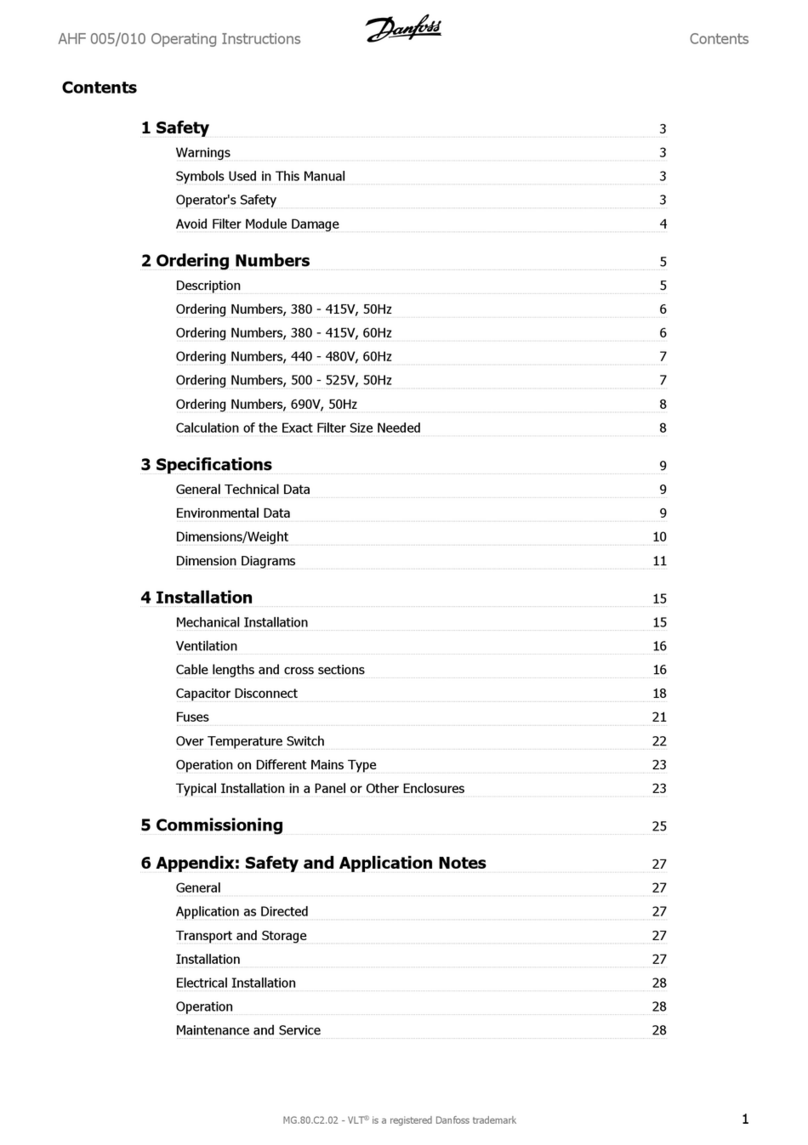
Danfoss
Danfoss VLT AHF 005 User manual
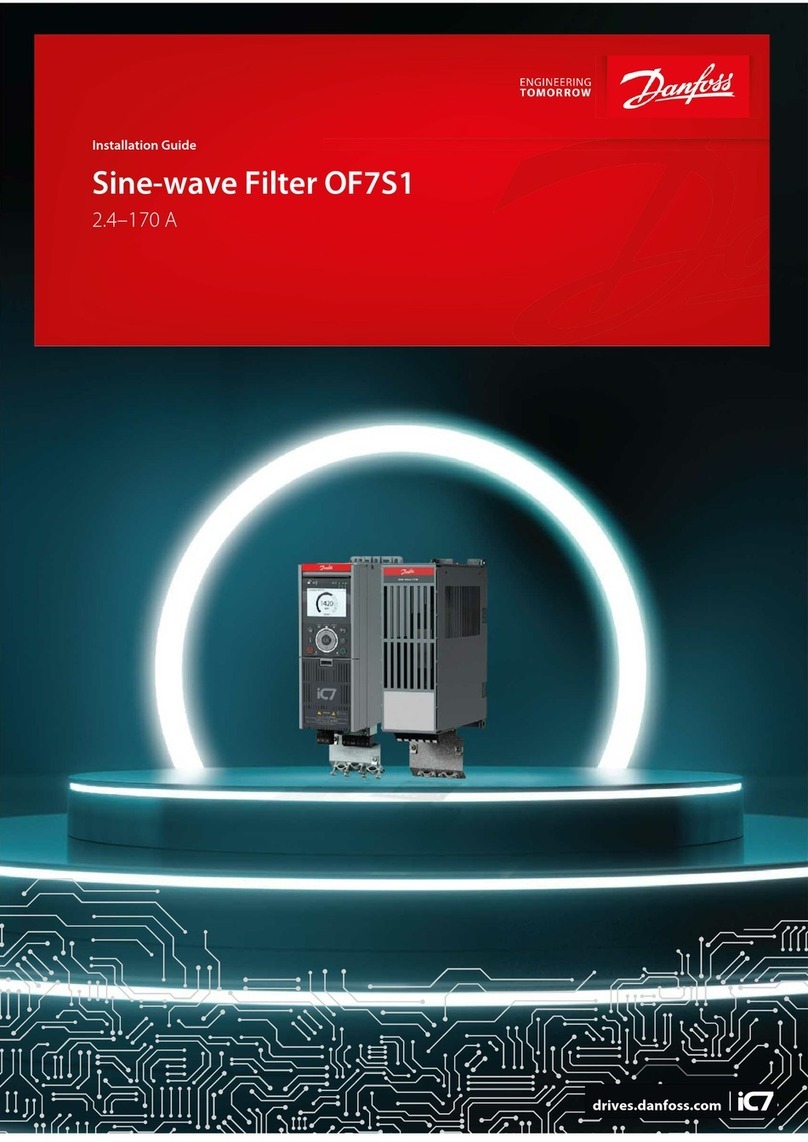
Danfoss
Danfoss OF7S1 User manual
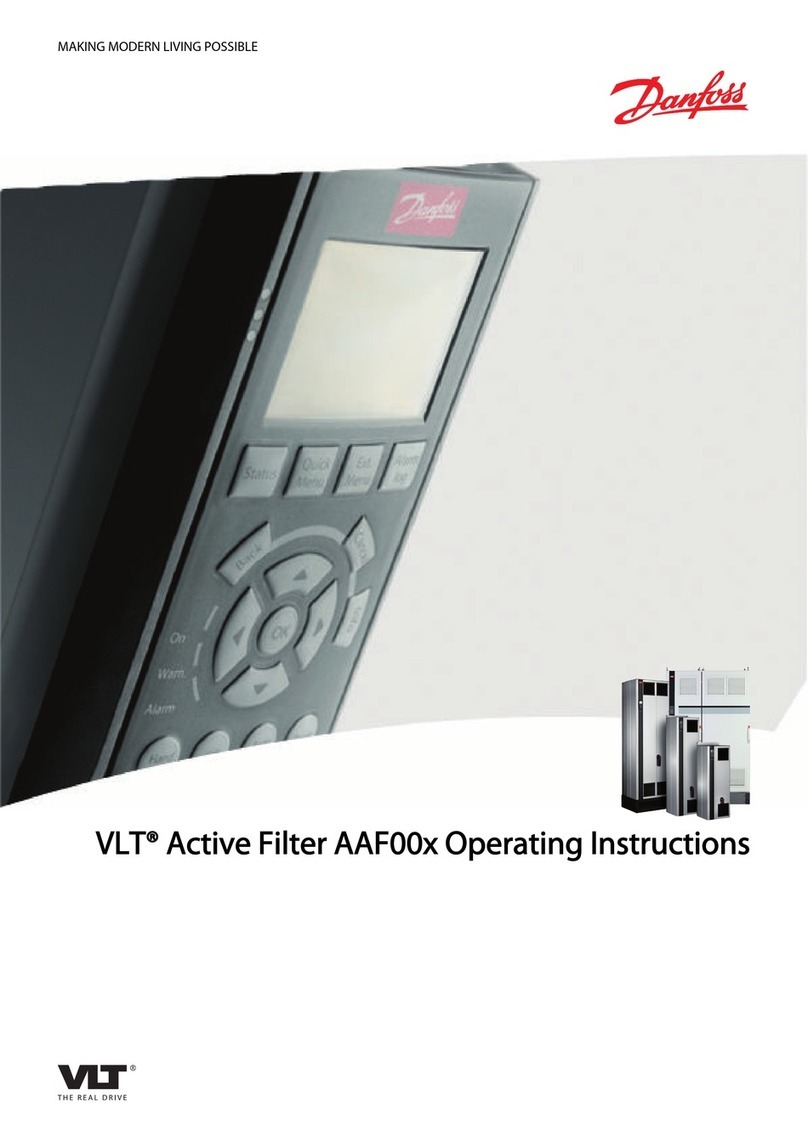
Danfoss
Danfoss VLT AAF00x User manual
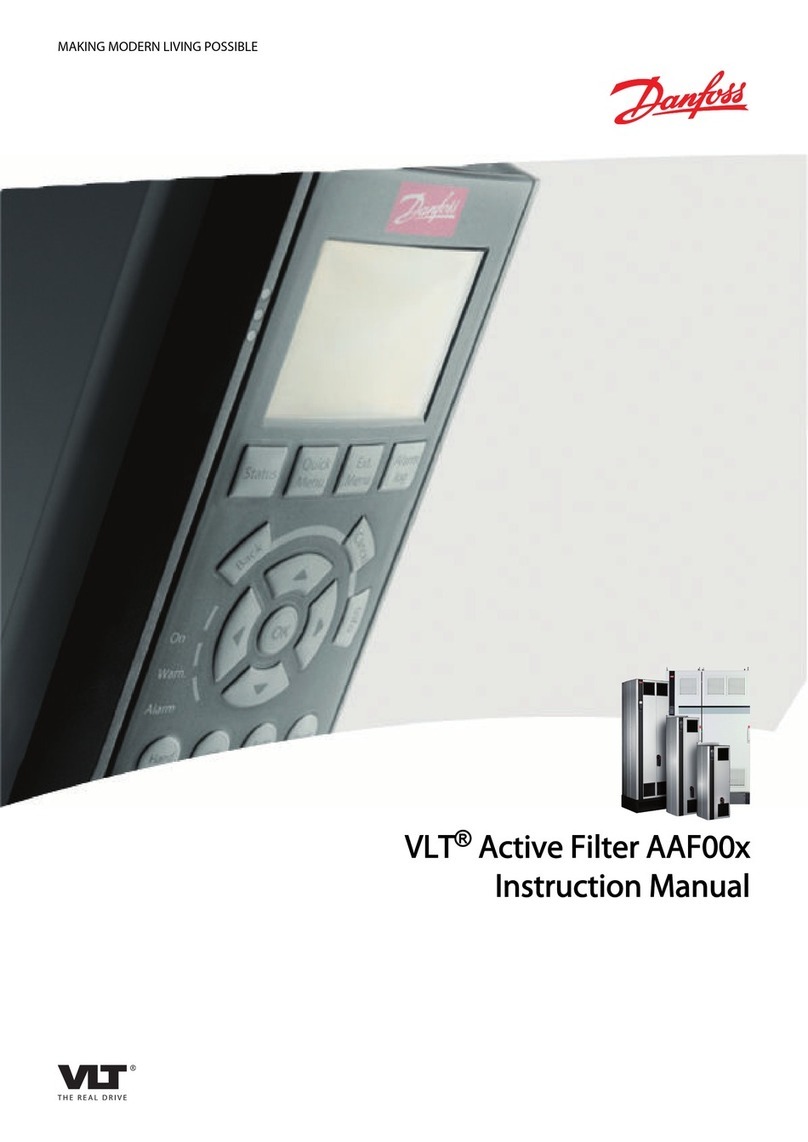
Danfoss
Danfoss VLT AAF00x User manual

Danfoss
Danfoss AHF 005 User manual
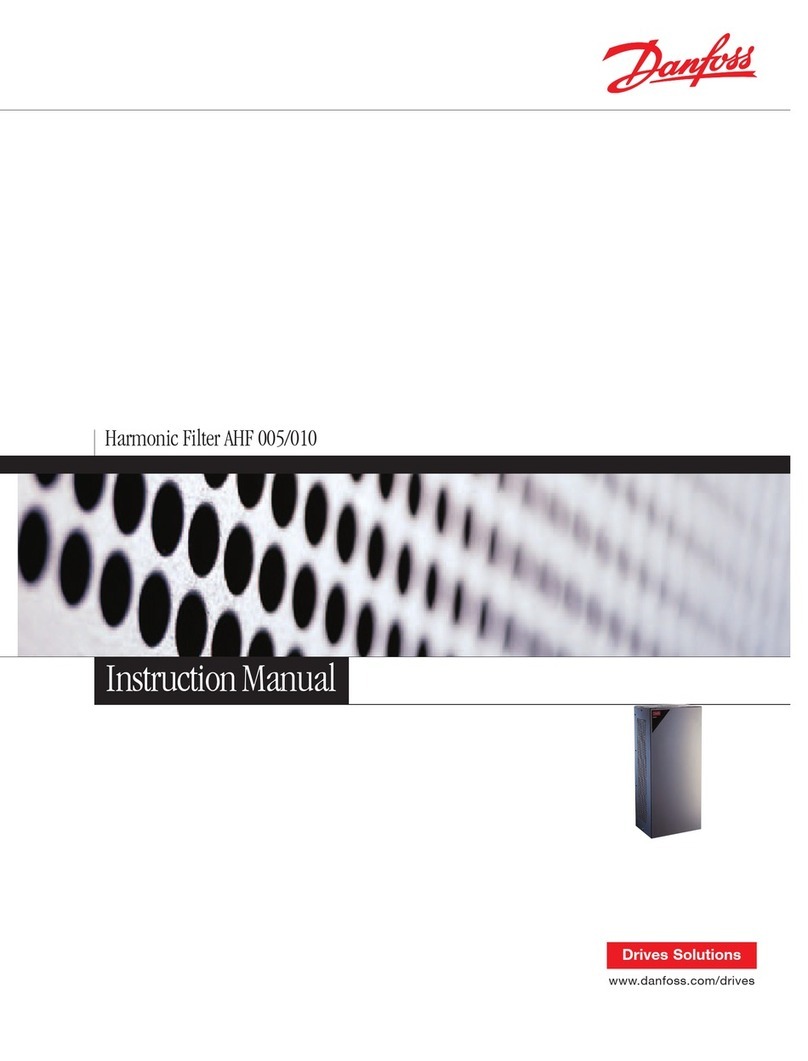
Danfoss
Danfoss VLT AHF 005 User manual
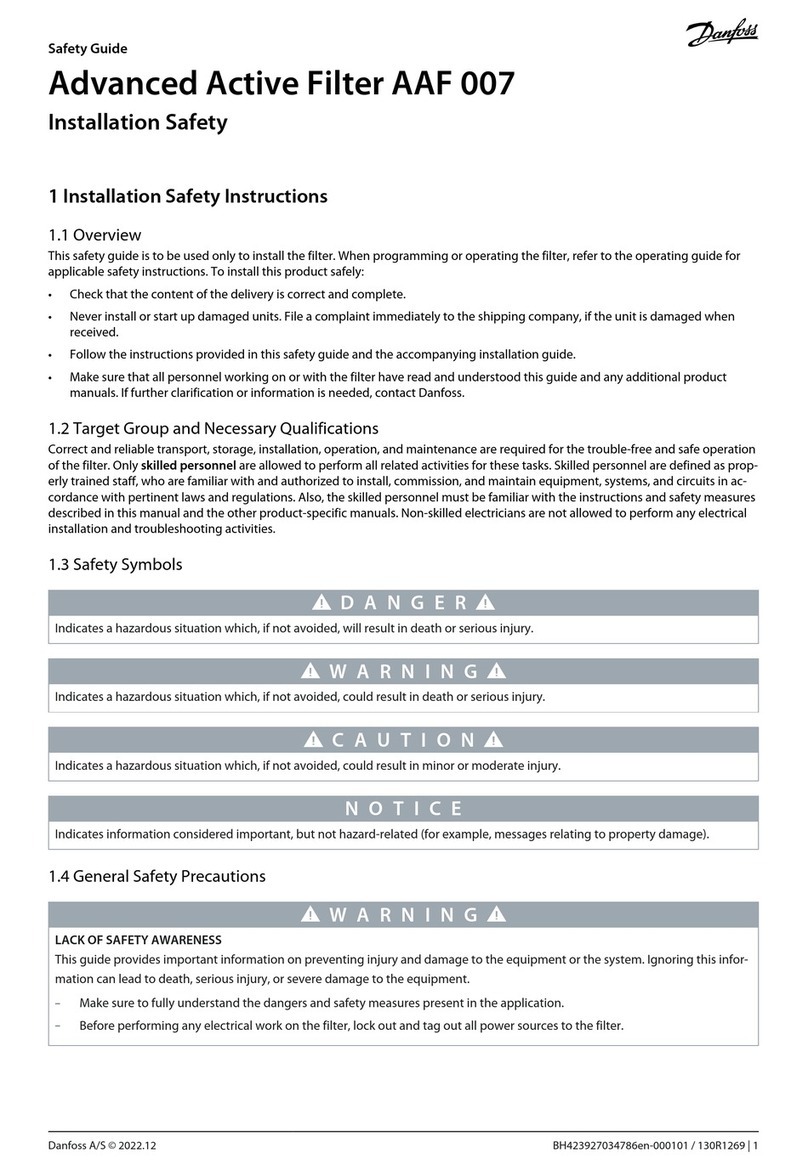
Danfoss
Danfoss AAF 007 Installation and operating manual

Danfoss
Danfoss VLT AAF006 User manual
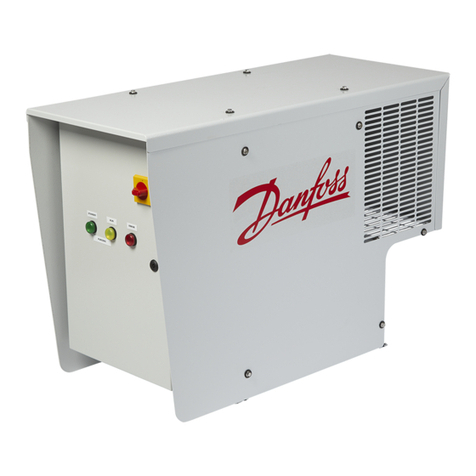
Danfoss
Danfoss IPS 8 User manual

Danfoss
Danfoss VLT AAF006 User manual


